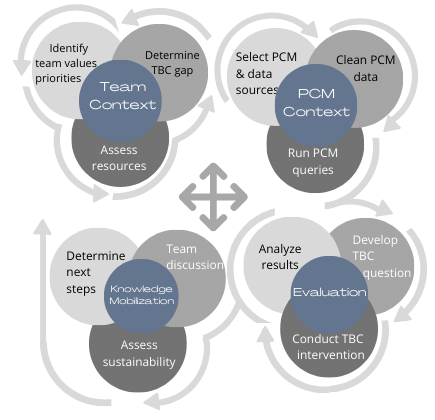Use of Patient Portals for Patient-generated Data
Funded by Patient-Centred Measurement Methods Cluster, our team explored different avenues for integrating patient-generated data into team care decisions. Our pilot study involved adding patient-reported outcome measures and patient-reported experience measures and educational tools into a patient portal. Patients and the clinic then used the portal for two months, and were interviewed at different stages of implementation. Our analysis of the data resulted in five methods being proposed for the use of patient-generated data in team based care. The methods demonstrate how one can collect, integrate and use patient-generated mental health data to enhance team performance in supporting patients as active partners in their care and improving primary care access.

Patient Portals and Health Equity
I have led to systematic reviews on patient portals. The first was a scoping review that examined how health equity was being addressed in patient portal research. Data were analyzed using the ehealth equity framework, an adaptation of the World Health Organization’s framework on social determinants of inequities in health. We found that the majority of research is focused on individual patient-level strategies (e.g., training) and found few examples of system-level strategies (e.g., policy). The publication on ‘Is research on patient portals attuned to health equity: A scoping review’ was awarded one of the top three “best of medical informatics” articles of 2019, International Journal of Medical Informatics Special Section on Ethics in Health Informatics.
State of the Evidence on Patient Portal Research
The second systematic review was an umbrella review that synthesized the evidence on patient portals. We used the Clinical Adoption Meta-Model (CAMM) to organize findings. We also introduced a new application of using GRADE (Grading of Recommendations, Assessment, Development, and Evaluations), and CERQual (Confidence in the Evidence from Review of Qualitative Research) to assess evidence of systematic reviews. We found a lack of consistent reporting of portal features makes it challenging to evaluate and compare portal effects. Our recommendations include the need for better awareness of the social, organizational, policy, and temporal dimensions to better understand underlying mechanisms and context that impact portal use and effects. The findings from our review are summarized in an evidence map.